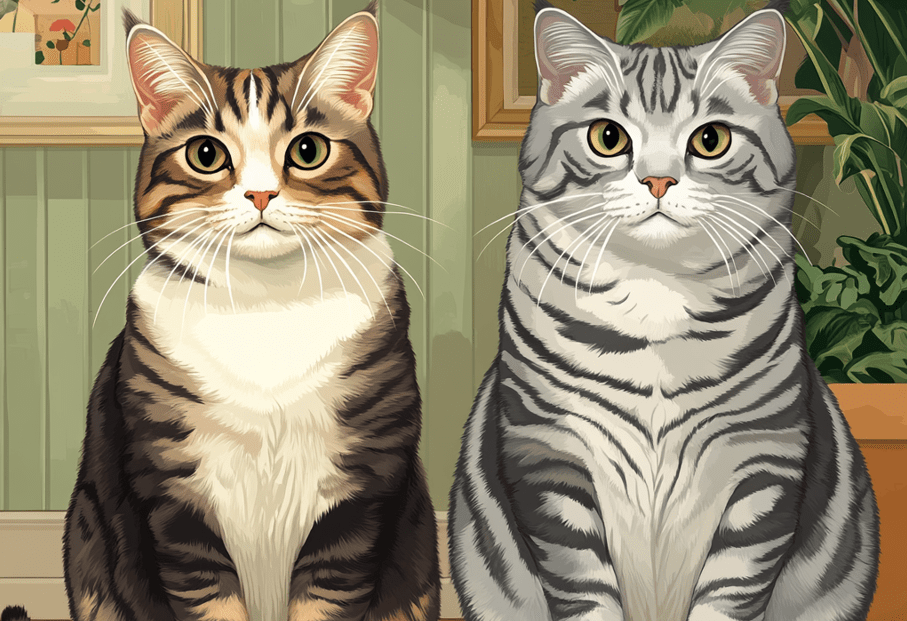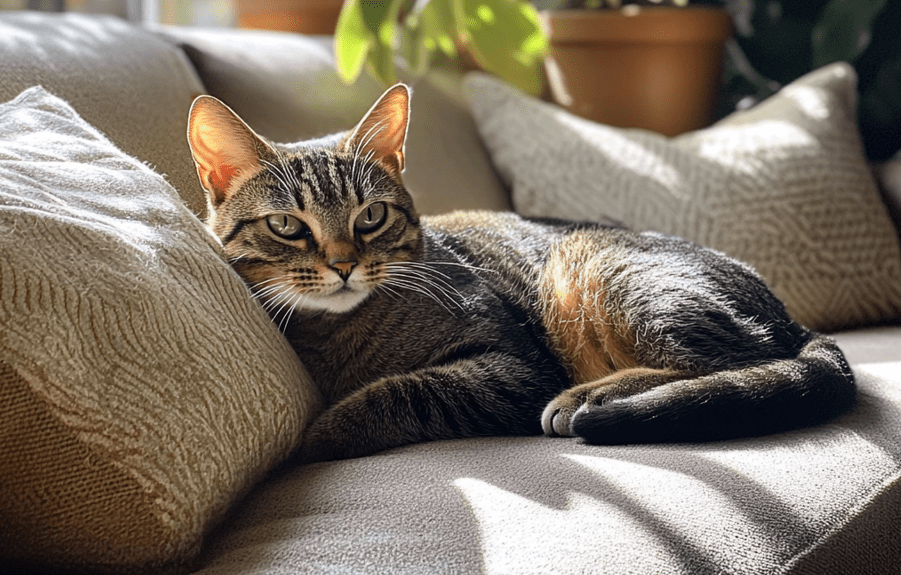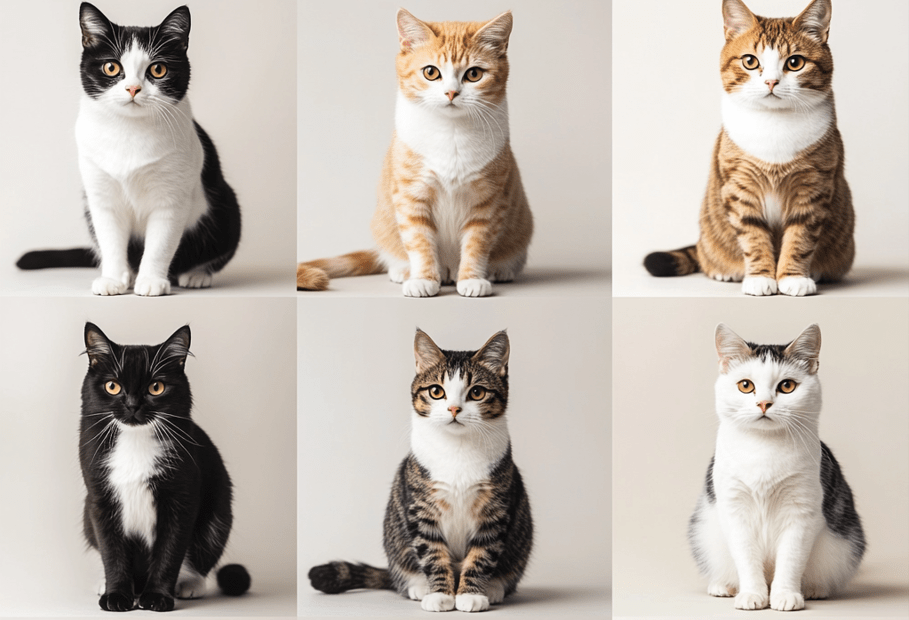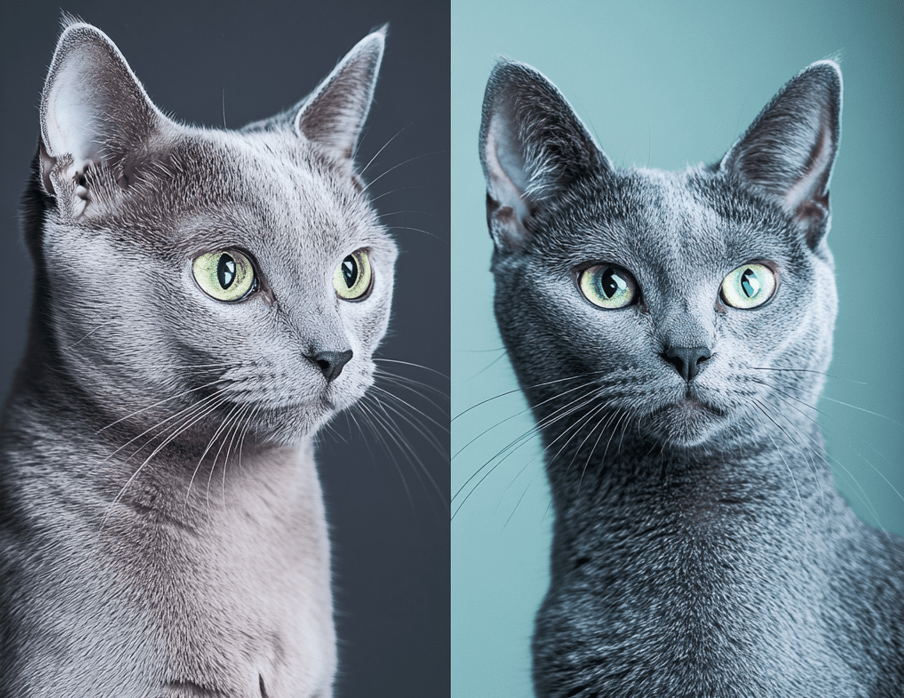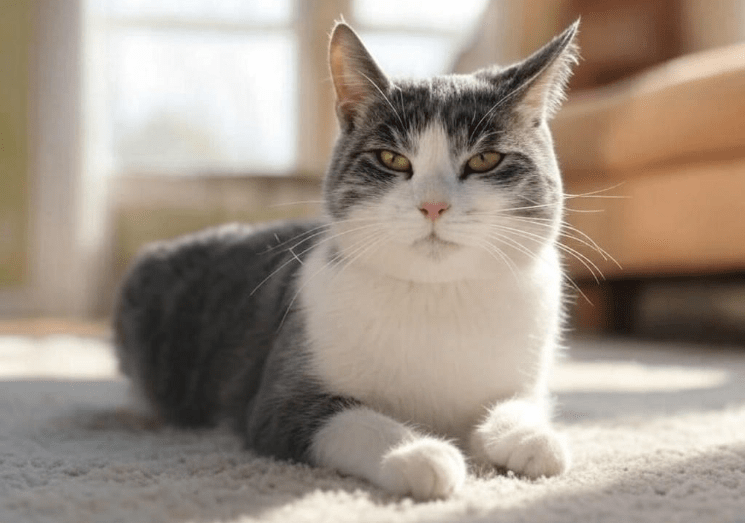
As summer temperatures soar, keeping your Domestic Shorthair cool becomes a top priority for pet owners. Domestic Shorthairs, with their sleek coats and playful personalities, are prone to overheating in hot weather, which can lead to discomfort or serious health issues like heatstroke. By implementing practical and effective strategies, you can ensure your feline friend stays comfortable and healthy during the hottest months. This comprehensive guide explores the best ways to keep your Domestic Shorthair cool, offering actionable tips, insights, and expert advice to help your cat thrive in warm conditions.
Understanding Why Domestic Shorthairs Need Cooling
Domestic Shorthairs, while adaptable, are not immune to the effects of high temperatures. Their short, dense coats provide some insulation, but they lack the specialized cooling mechanisms of other animals. Cats primarily cool themselves through panting and grooming, which spreads saliva on their fur to promote evaporation. However, these methods are less effective in extreme heat or high humidity. Recognizing the signs of overheating—such as excessive panting, lethargy, drooling, or rapid breathing—can help you take timely action to keep your Domestic Shorthair cool and safe.
Why Focus on Domestic Shorthairs?
While all cats are susceptible to heat, Domestic Shorthairs are one of the most common breeds, making up a significant portion of household pets. Their diverse genetic backgrounds mean they may not have the same heat tolerance as breeds specifically adapted to warmer climates, like the Siamese. Ensuring their comfort during hot weather is essential for their well-being, especially in regions with intense summers.
Top Strategies to Keep Your Domestic Shorthair Cool
Here are the most effective ways to help your Domestic Shorthair beat the heat, ensuring they remain happy and healthy throughout the summer.
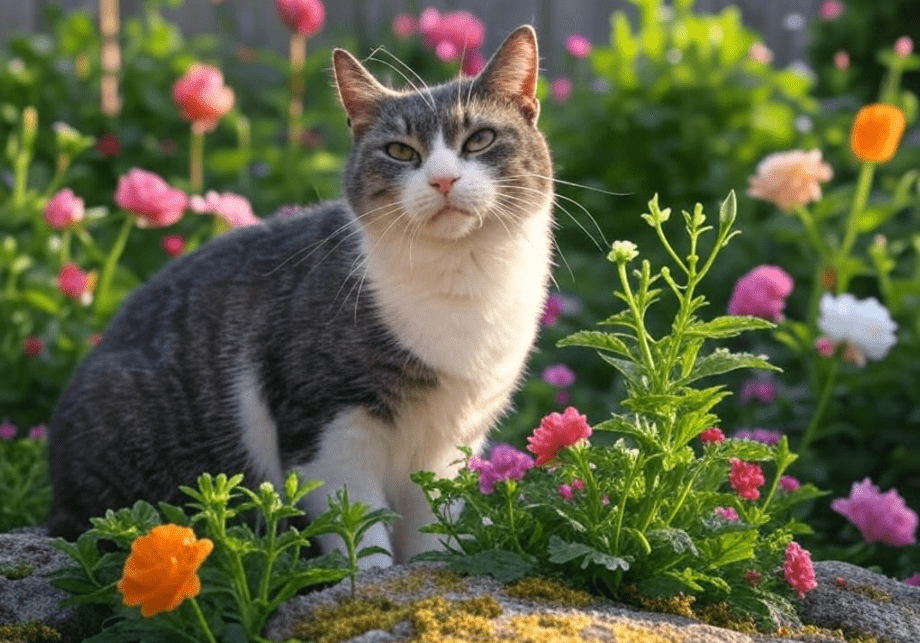
1. Provide Ample Fresh Water
Hydration is the cornerstone of keeping your Domestic Shorthair cool. Cats often don’t drink enough water, which can lead to dehydration in hot weather. To encourage drinking:
Use a Cat Water Fountain: Domestic Shorthairs are often attracted to running water, which mimics natural streams. A pet fountain can entice your cat to drink more.
Place Multiple Water Bowls: Position clean, fresh water bowls in various locations around your home, especially in areas where your cat likes to rest.
Add Ice Cubes: On particularly hot days, drop a few ice cubes into the water to keep it cool and refreshing. Some cats even enjoy batting at the cubes!
Flavor the Water: If your cat is reluctant to drink, try adding a small amount of low-sodium chicken broth or tuna water to make it more appealing.
Pro Tip: Monitor your cat’s water intake. If they’re drinking significantly less or more than usual, consult a veterinarian, as this could indicate a health issue.
2. Create Cool Indoor Spaces
Your home is your cat’s primary environment, so making it a cool sanctuary is essential. Here’s how to optimize your indoor space:
Use Air Conditioning: Keep your home at a comfortable temperature (ideally between 68-75°F) using air conditioning. If you don’t have AC, consider portable units for key areas where your cat spends time.
Provide Cooling Mats: Pet cooling mats, which use gel or water to stay cold, are perfect for cats to lounge on. Place them in your cat’s favorite spots, like near windows or on the floor.
Close Curtains and Blinds: Block out direct sunlight during the hottest parts of the day to prevent your home from heating up.
Use Fans Strategically: Place fans to circulate air, but ensure they’re positioned safely so your cat can’t knock them over or get injured.
3. Optimize Your Cat’s Grooming Routine
Grooming plays a significant role in temperature regulation for Domestic Shorthairs. While their short coats require less maintenance than long-haired breeds, regular grooming can help keep them cool.
Brush Regularly: Brushing removes loose fur and prevents matting, which can trap heat. Aim to brush your Domestic Shorthair at least once or twice a week.
Avoid Shaving: Contrary to popular belief, shaving a cat’s coat can disrupt their natural temperature regulation and expose their skin to sunburn. Stick to brushing unless a veterinarian recommends otherwise.
Damp Towel Wipe-Down: On hot days, gently wipe your cat with a cool, damp towel. This mimics their natural grooming behavior and provides instant relief.
4. Offer Cooling Treats and Foods
Diet can play a role in keeping your Domestic Shorthair cool. Wet food, in particular, is an excellent way to increase hydration while providing a refreshing treat.
Serve Wet Food: Wet cat food has a high moisture content, which helps keep your cat hydrated. Serve it chilled for an extra cooling effect.
Make Frozen Treats: Freeze low-sodium chicken broth or tuna water in ice cube trays for a fun, cooling snack. Ensure the treats are small enough to avoid choking hazards.
Avoid Overfeeding Dry Food: Dry kibble has low moisture content, so balance it with wet food or extra water intake during hot weather.
5. Create Shady Outdoor Spaces (If Applicable)
If your Domestic Shorthair has access to a safe outdoor area, such as a catio or enclosed yard, ensure it’s equipped to keep them cool.
Provide Shade: Set up umbrellas, tarps, or pet-safe tents to create shaded areas where your cat can relax.
Install a Pet Fountain: An outdoor water fountain encourages drinking and adds a cooling element to the environment.
Limit Outdoor Time: Avoid letting your cat outside during peak heat hours (typically 10 a.m. to 4 p.m.). Early mornings or evenings are safer for outdoor play.
Safety Note: Always supervise outdoor time and ensure your cat has a way to return indoors to cool off.
6. Monitor for Signs of Heatstroke
Heatstroke is a serious risk for cats in hot weather. Knowing the symptoms and acting quickly can save your Domestic Shorthair’s life.
-
Symptoms to Watch For:
-
Rapid or labored breathing
-
Excessive panting or drooling
-
Lethargy or weakness
-
Vomiting or diarrhea
-
Reddened gums or tongue
-
-
What to Do:
-
Move your cat to a cool, shaded area immediately.
-
Offer small amounts of cool (not cold) water.
-
Apply cool, damp towels to their body, focusing on the head, neck, and paws.
-
Contact your veterinarian right away, even if symptoms improve.
-
7. Adjust Playtime to Cooler Hours
Domestic Shorthairs are known for their playful nature, but intense activity during hot weather can lead to overheating. Adjust your cat’s play schedule to keep them safe.
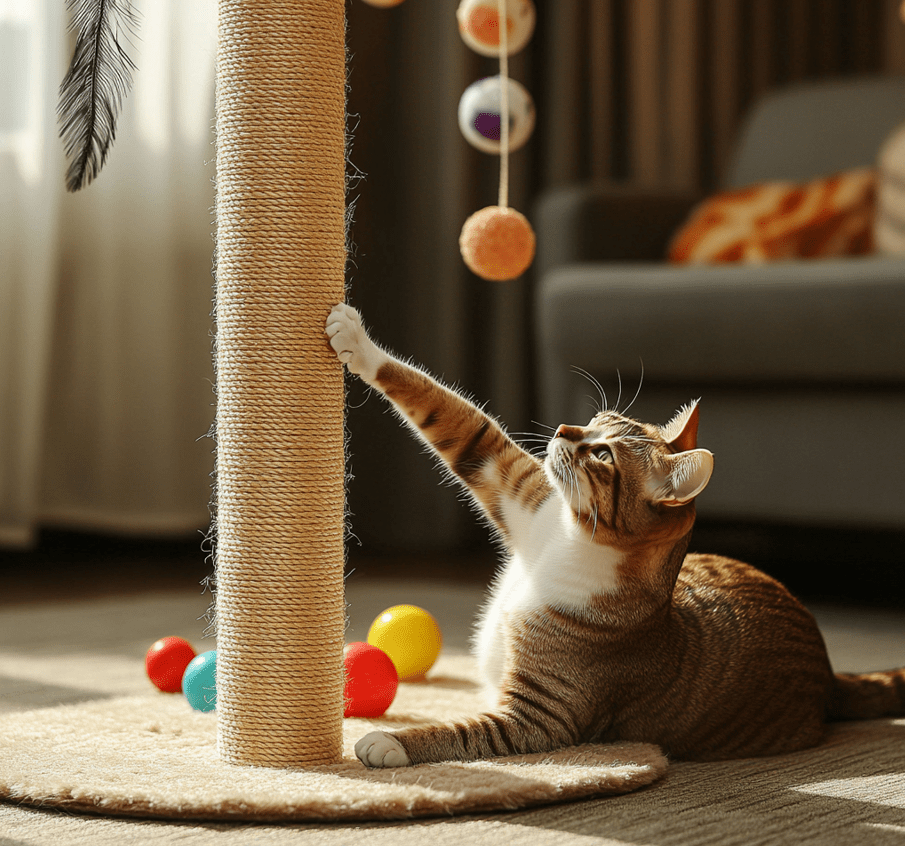
Play in the Morning or Evening: Schedule interactive play sessions during cooler parts of the day to avoid overheating.
Use Low-Effort Toys: Opt for toys like laser pointers or feather wands that encourage movement without excessive exertion.
Provide Mental Stimulation: Puzzle feeders or treat-dispensing toys keep your cat engaged without raising their body temperature.
Pro Tip: If your cat seems overly tired or disinterested in play, it could be a sign of heat stress. Give them a break and ensure they have access to a cool resting spot.
8. Invest in Cooling Accessories
The pet industry offers a range of products designed to help keep cats cool. Here are some worth considering:
Cooling Beds: Elevated pet beds allow air to circulate underneath, keeping your cat cooler than a traditional bed.
Cooling Collars: These pet-safe collars contain gel that stays cool for hours, providing localized relief.
Portable Fans: Small, battery-operated fans can be placed near your cat’s favorite lounging spots for a gentle breeze.
Additional Tips for Long-Term Comfort
Beyond immediate cooling strategies, consider these long-term approaches to keep your Domestic Shorthair comfortable year-round:
Maintain a Healthy Weight: Overweight cats are more prone to heat stress. Work with your veterinarian to ensure your Domestic Shorthair maintains a healthy weight through diet and exercise.
Regular Vet Checkups: Annual or biannual vet visits can catch underlying health issues that might make your cat more susceptible to heat.
Create a Cat-Friendly Environment: Designate cool, quiet areas in your home where your cat can retreat during hot weather. Add perches near windows with good airflow for added comfort.
Common Mistakes to Avoid
When trying to keep your Domestic Shorthair cool, steer clear of these common pitfalls:
Using Ice-Cold Water: Extremely cold water can shock your cat’s system. Stick to cool or room-temperature water for drinking and cooling.
Forcing Your Cat to Stay in One Spot: Cats are independent and may resist being placed on a cooling mat or in a specific area. Let them choose where they’re comfortable.
Ignoring Humidity: High humidity can make it harder for cats to cool off. Use a dehumidifier if your home is particularly humid.
Overlooking Senior Cats: Older Domestic Shorthairs may have a harder time regulating their body temperature. Pay extra attention to their comfort during hot weather.
Conclusion
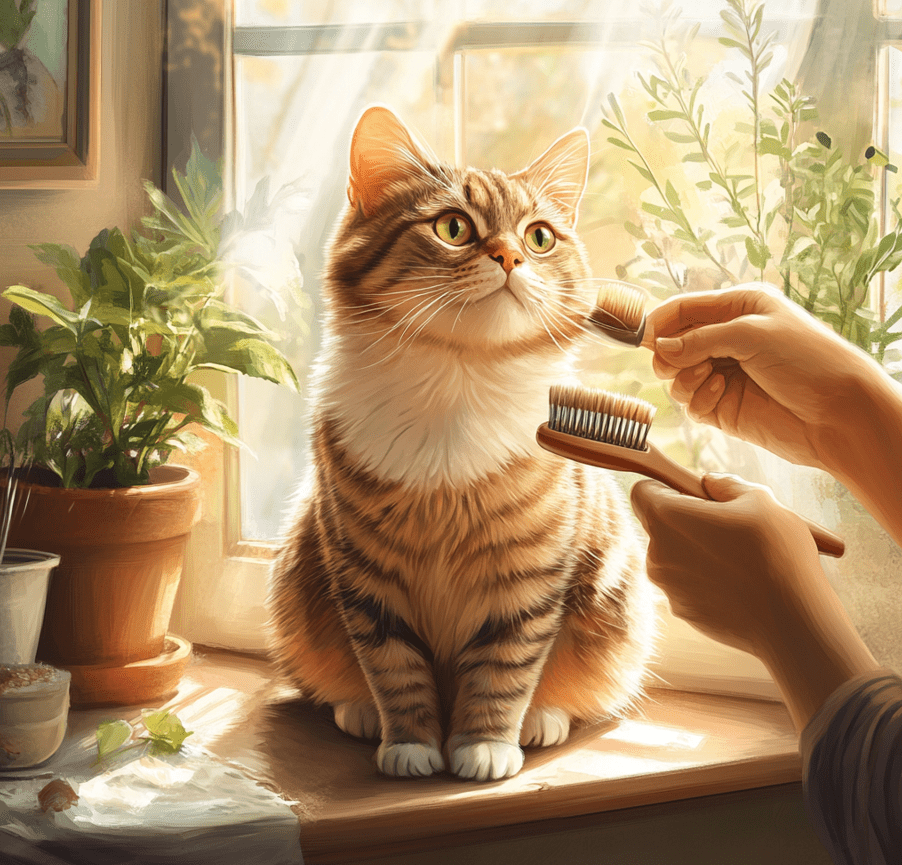
Keeping your Domestic Shorthair cool in hot weather requires a combination of hydration, environmental adjustments, and vigilant monitoring. By providing fresh water, creating cool indoor spaces, adjusting playtime, and using cooling accessories, you can ensure your cat stays comfortable and healthy all summer long. Regularly check for signs of overheating and consult your veterinarian if you have concerns about your cat’s well-being. With these strategies, you’ll be well-equipped to help your Domestic Shorthair thrive, no matter how high the temperatures climb.
This guide aims to be the ultimate resource for keeping your Domestic Shorthair cool, offering practical, pet-safe solutions that prioritize your cat’s comfort and safety. By implementing these tips, you’ll create a cool, cat-friendly environment that lets your furry friend enjoy summer to the fullest.

